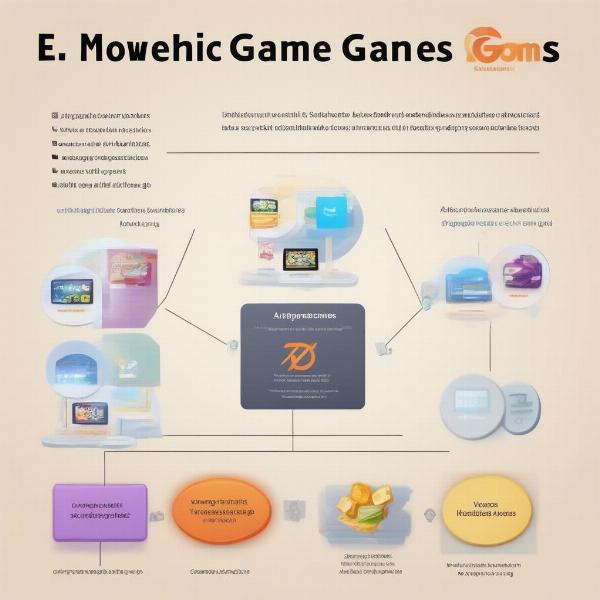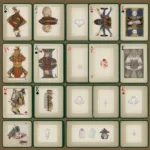Matching games are a timeless classic, loved by children and adults alike. They’re a fantastic way to boost memory, improve concentration, and have fun all at once. Whether you’re a seasoned game developer or just starting out, this guide will walk you through the process of creating engaging and effective matching games.
Understanding the Fundamentals of Matching Games
Creating a matching game involves more than just pairing up identical images. It’s about designing an experience that’s both challenging and rewarding. A good matching game should have a clear objective, intuitive mechanics, and visually appealing assets. Consider the age group you are targeting as this will influence the complexity and theme of your game. Younger audiences might enjoy simpler pairings and brighter colors, while older players might prefer more intricate designs and challenging game modes.
Choosing the Right Platform and Tools
Your choice of platform and tools will depend on your technical skills and the scope of your project. For simple, web-based matching games, HTML, CSS, and JavaScript are excellent choices. If you’re aiming for a mobile app, platforms like Unity and Unreal Engine offer robust development environments, though they require more advanced programming knowledge. Several online game development platforms offer drag-and-drop interfaces, making it easier for beginners to create simple matching games without coding experience.
 Essential Tools for Building Engaging Matching Games
Essential Tools for Building Engaging Matching Games
Designing Engaging Gameplay Mechanics
The core mechanic of a matching game is simple: reveal two cards, and if they match, they stay revealed. However, you can introduce variations to make your game more engaging. Consider adding a timer to increase the challenge, incorporating power-ups like hints or shuffles, or implementing a scoring system based on the number of attempts or time taken. Adding different levels with increasing difficulty can also keep players hooked.
Creating Visually Appealing Assets
The visual elements of your matching game play a crucial role in its appeal. High-quality graphics, vibrant colors, and a consistent theme can significantly enhance the user experience. You can create your own assets using design software like Adobe Photoshop or Illustrator, or utilize free resources like online image libraries and icon sets. Ensure your assets are appropriately sized and optimized for the chosen platform to maintain optimal performance.
Implementing the Game Logic
This stage involves programming the rules and interactions of your matching game. You’ll need to define how cards are revealed, how matches are detected, and how the game progresses. If you’re using a game engine, you can utilize built-in functionalities and scripting languages to implement these mechanics. For web-based games, JavaScript provides the necessary tools for handling user interactions and game logic.
 Implementing Matching Game Logic using JavaScript
Implementing Matching Game Logic using JavaScript
Testing and Refining Your Game
Thorough testing is crucial to ensure a smooth and enjoyable gaming experience. Test your game on different devices and browsers to identify and fix any bugs or performance issues. Gather feedback from playtesters to get valuable insights into the game’s usability and entertainment value. Use this feedback to refine the game mechanics, adjust the difficulty, and improve the overall polish.
Monetization Strategies for Matching Games
If you’re planning to monetize your matching game, consider various strategies like in-app purchases, advertising, or premium versions. In-app purchases can offer players cosmetic items, power-ups, or additional levels. Advertising can generate revenue through banner ads or interstitial ads shown between levels. A premium version could offer an ad-free experience or exclusive content.
 Effective Monetization Strategies for Matching Games
Effective Monetization Strategies for Matching Games
Advanced Techniques for Matching Game Development
To take your matching game to the next level, consider incorporating advanced techniques. Procedural generation can create endless levels, keeping the gameplay fresh and challenging. Integrating social features like leaderboards and multiplayer modes can enhance player engagement. Exploring different themes and narrative elements can add depth and immersion to the game.
Marketing and Promoting Your Matching Game
Once your game is ready, it’s time to get it in front of players. Utilize app stores, social media platforms, and online gaming communities to promote your game. Create compelling trailers and screenshots that showcase the gameplay and visuals. Engage with potential players and build a community around your game.
Conclusion
Creating matching games can be a rewarding experience, whether you’re aiming for a simple mobile game or a complex web-based application. By understanding the fundamentals of game design, utilizing the right tools, and focusing on creating engaging gameplay and visuals, you can bring your matching game ideas to life. So, start experimenting, gather feedback, and refine your game to create a truly memorable experience for players. Remember, creating matching games is about more than just matching pairs; it’s about creating an experience that players will enjoy.
FAQ
-
What are the best programming languages for creating matching games?
JavaScript, C#, and C++ are popular choices. -
What are some popular game engines for developing matching games?
Unity and Unreal Engine are widely used for mobile and desktop games. -
How can I create visually appealing assets for my matching game?
Use design software like Photoshop or Illustrator, or find free resources online. -
How do I test and refine my matching game?
Test on different devices, gather feedback from playtesters, and iterate based on their input. -
What are some effective monetization strategies for matching games?
Consider in-app purchases, advertising, or premium versions. -
How can I create different levels in my matching game?
Increase the number of cards, introduce new mechanics, or change the game board layout. -
How can I make my matching game more challenging?
Add a timer, limit the number of moves, or introduce obstacles.

